Bali, the Island of the Gods, is renowned worldwide for its vibrant culture, breathtaking landscapes, and especially its exquisite handicrafts. Among the many artistic treasures that Bali offers, the Garuda sculpture handicraft stands out as a symbol of spiritual significance, artistic mastery, and cultural heritage. This article delves deep into the fascinating history of Garuda sculpture handicrafts in Bali, exploring their origins, evolution, and enduring appeal in the realms of wholesale and home decor. Whether you are an art enthusiast, a collector, or a business owner looking for unique wholesale handicrafts, understanding the story behind Garuda sculptures will enrich your appreciation of these magnificent creations.
🦅 What is Garuda? Understanding the Symbolism Behind the Sculpture
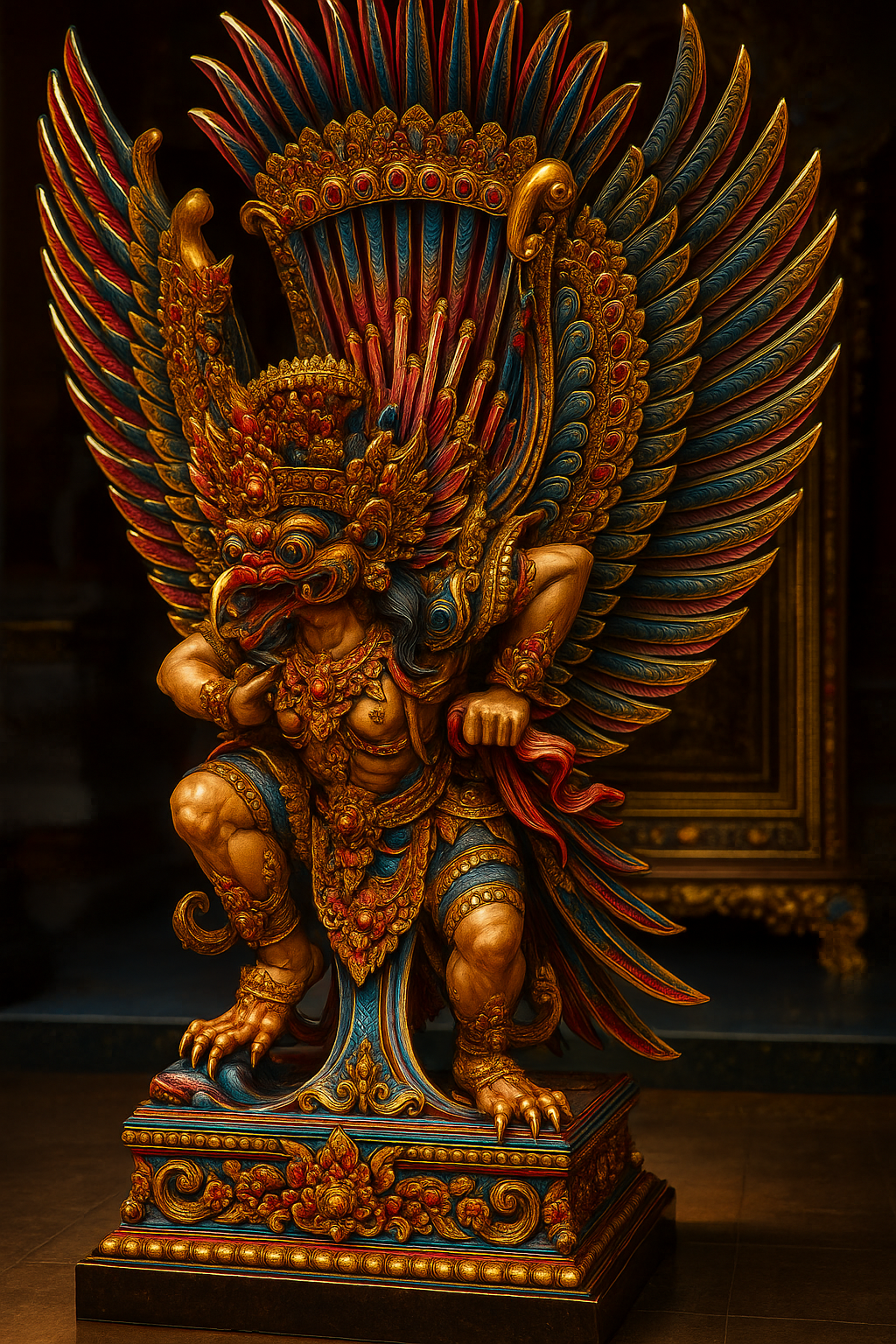
Before diving into the history, it’s essential to understand what Garuda represents. In Hindu and Buddhist mythology, Garuda is a majestic bird-like creature, often depicted as a half-man, half-eagle figure. It is the mount (vahana) of Lord Vishnu, one of the principal deities in Hinduism, symbolizing power, protection, and freedom.
In Bali, where Hinduism is deeply ingrained in the culture, Garuda is more than just a mythological figure; it embodies spiritual protection and divine strength. This symbolism makes Garuda sculptures highly revered and sought after, not only as religious icons but also as exquisite pieces of art for home decor.
🏺 Origins of Garuda Sculpture Handicraft in Bali: A Historical Overview
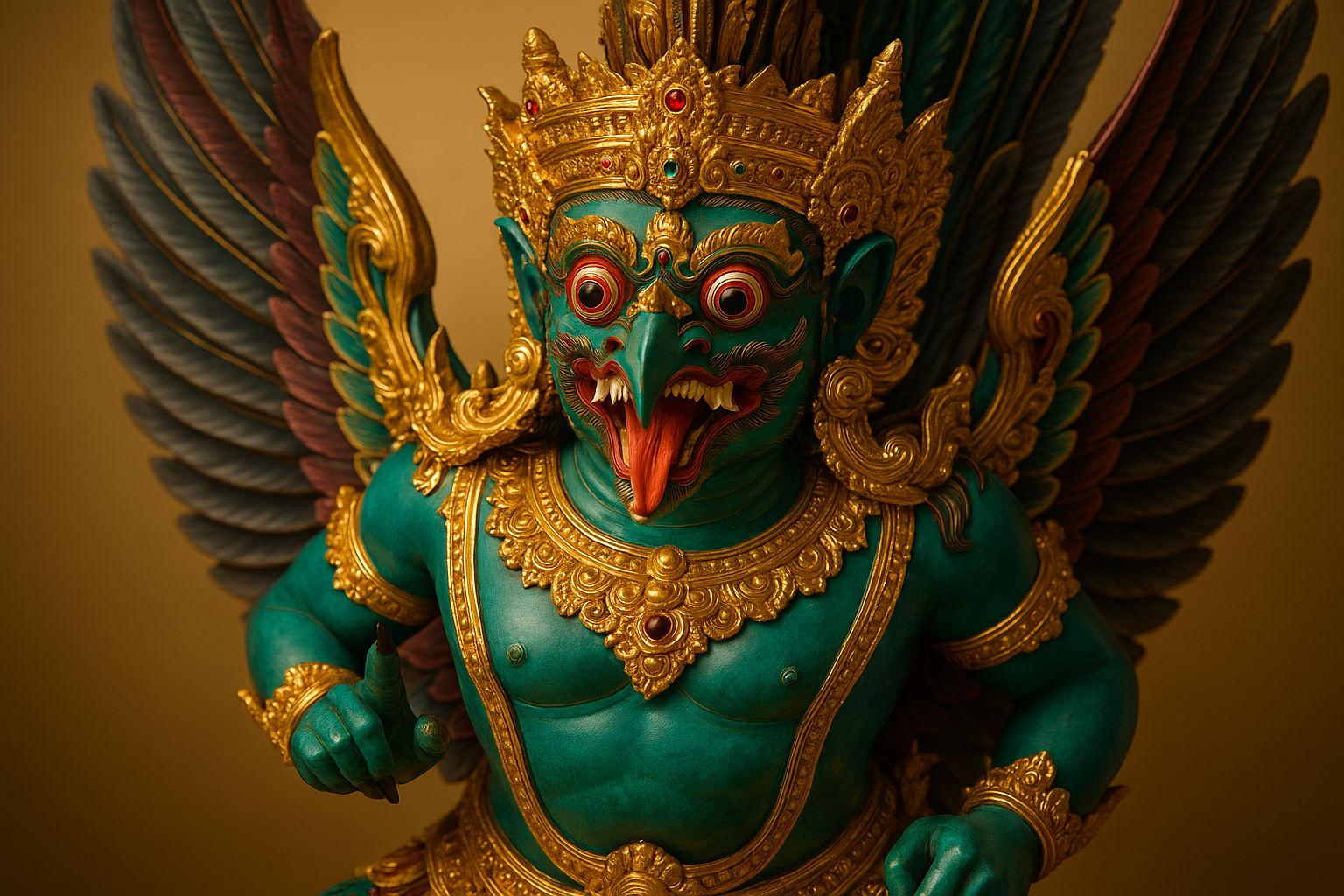
The tradition of Garuda sculpture handicraft in Bali dates back centuries, intertwined with the island’s religious and cultural evolution.
Early Beginnings: Influence of Hinduism and Buddhism (8th - 14th Century)
The roots of Garuda sculpture in Bali can be traced to the arrival of Hinduism and Buddhism from India and Java around the 8th century. These religions brought with them rich iconography and artistic traditions, including the depiction of divine beings like Garuda.
- Religious Temples and Rituals: Early Balinese temples featured stone and wood carvings of Garuda, serving both decorative and spiritual purposes. These sculptures were integral to temple architecture, symbolizing protection against evil forces.
- Material and Techniques: Initially, artisans used volcanic stone and later wood, employing intricate carving techniques passed down through generations.
The Majapahit Era (13th - 16th Century): The Golden Age of Balinese Art
The Majapahit Empire, centered in East Java, had a profound influence on Balinese culture during the 13th to 16th centuries. When the empire declined, many Javanese artists and priests migrated to Bali, bringing with them advanced artistic skills and religious knowledge.
- Refinement of Garuda Sculptures: This period saw the refinement of Garuda sculptures, with more detailed and expressive carvings. Artisans began to experiment with different styles, blending Javanese and Balinese aesthetics.
- Wood as a Preferred Medium: Wood carving flourished, especially using teak and pule wood, prized for their durability and fine grain. The Garuda sculptures became more dynamic, often featuring elaborate wings and fierce expressions.
- Cultural Significance: Garuda sculptures were not only temple ornaments but also used in royal palaces and ceremonial events, symbolizing authority and divine protection.
🎭 Cultural Significance: Garuda Sculptures in Balinese Life and Rituals
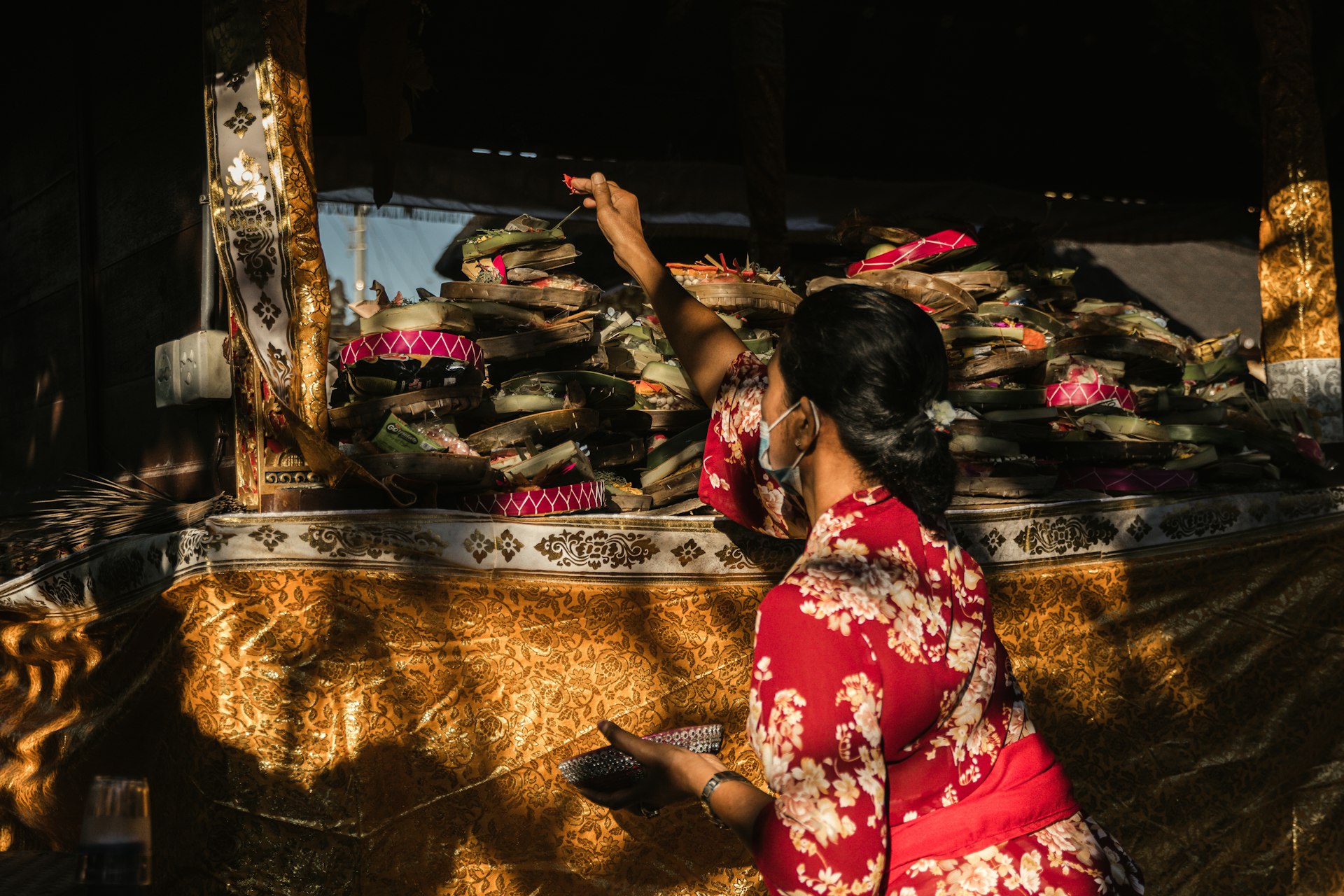
Garuda sculptures are not merely decorative objects; they hold profound cultural and spiritual significance in Bali. Traditionally, these sculptures are placed in temples, homes, and public spaces as protective talismans. The Garuda, symbolizing divine power and freedom, is believed to ward off evil spirits and bring blessings to the household.
During Balinese festivals and religious ceremonies, Garuda imagery often features prominently. For example, in the famous Kecak dance performances, which narrate stories from the Ramayana, Garuda’s presence is symbolically invoked to represent heroism and divine intervention. This deep connection to Balinese spirituality ensures that the handicraft remains a living tradition, not just an art form.
In homes, Garuda sculptures have become cherished pieces of home decor, blending aesthetic appeal with cultural heritage. Many Balinese families display these sculptures prominently, reflecting pride in their identity and a desire to maintain spiritual harmony.
🎨 The Art of Garuda Sculpture Handicraft: Techniques and Styles
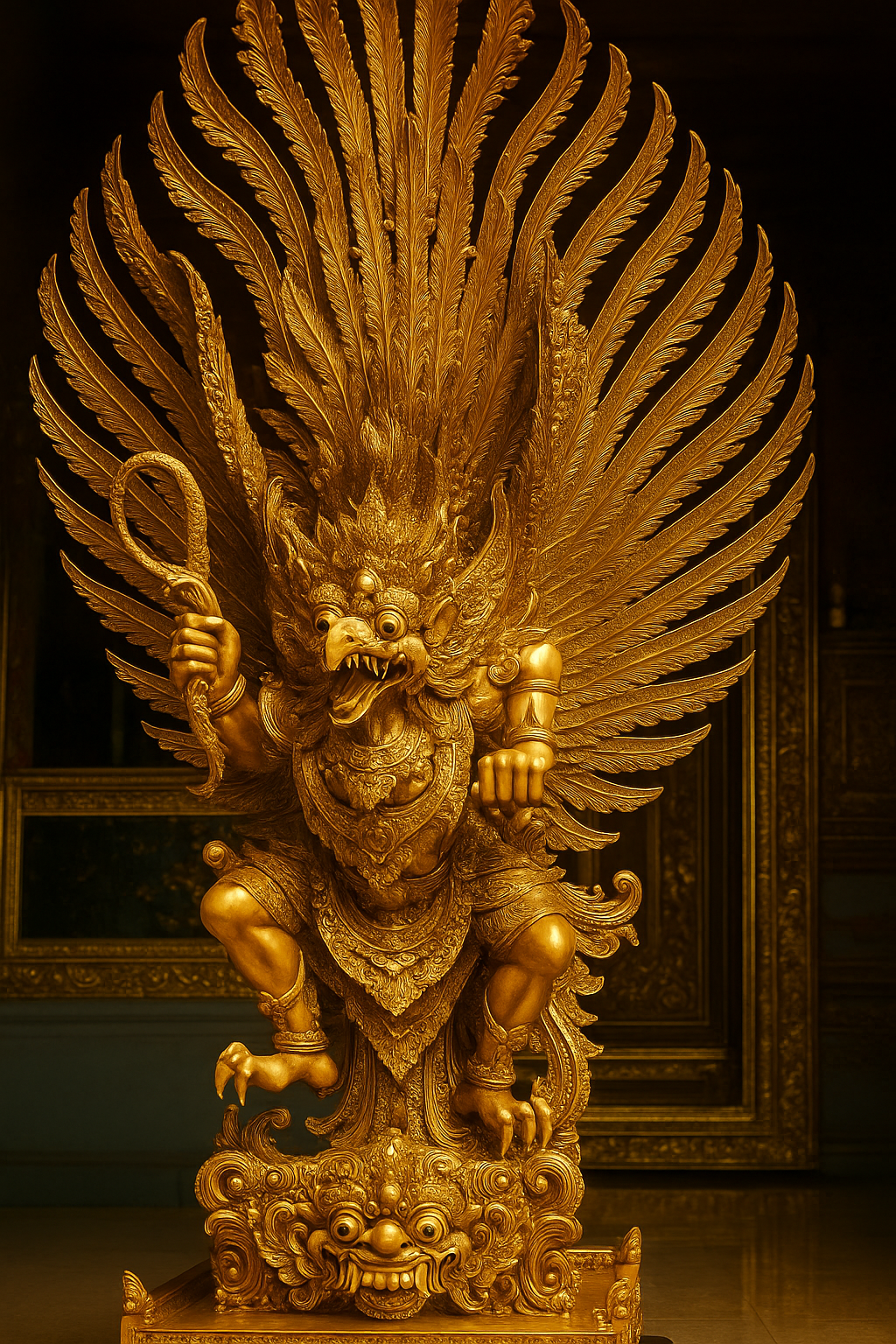
Balinese Garuda sculptures are celebrated for their intricate craftsmanship and artistic diversity. The process of creating these sculptures is a meticulous blend of tradition, skill, and creativity.
As centuries passed, the art of crafting Garuda sculptures in Bali evolved remarkably, reflecting changes in society, materials, and artistic influences. Initially, Balinese artisans primarily carved Garuda figures from volcanic stone and wood, materials abundant on the island. The early techniques were deeply rooted in religious devotion, with craftsmen meticulously following iconographic guidelines to ensure the sculptures embodied spiritual symbolism.
During the Dutch colonial period (17th to early 20th century), Balinese artisans encountered new tools and artistic influences, which subtly enriched their craftsmanship. While the core spiritual and cultural essence remained intact, the introduction of finer carving tools allowed for more intricate details, enhancing the expressiveness of Garuda sculptures. This period also saw the emergence of workshops where skills were passed down through families, preserving the tradition while encouraging innovation.
In modern times, the techniques have further diversified. Artisans now blend traditional hand-carving methods with modern tools to increase precision and efficiency, especially to meet growing demand in wholesale markets. The use of sustainable wood sources and eco-friendly finishes has also become more common, reflecting a global shift towards responsible handicrafts production.
Materials Used
- Wood: The most common material, especially teak, pule, and sandalwood, chosen for their workability and longevity.
- Stone: Volcanic stone and sandstone are used for larger, more permanent sculptures, often found in temples.
- Metal: Occasionally, bronze and brass are used for smaller decorative pieces.
Carving Techniques
- Hand Carving: Skilled artisans use chisels, knives, and gouges to carve detailed features, feathers, and facial expressions.
- Layering and Polishing: Multiple layers of carving add depth and texture, followed by polishing to enhance the wood’s natural beauty.
- Painting and Gilding: Some sculptures are painted with natural dyes or adorned with gold leaf to highlight details and add a luxurious touch.
Styles and Variations
- Traditional Style: Emphasizes religious symbolism with a focus on spiritual expression and iconographic accuracy.
- Contemporary Style: Modern artisans incorporate abstract and stylized elements, making the sculptures suitable for contemporary home decor.
- Miniature to Monumental: Sizes range from small figurines perfect for shelves to large statues used in gardens and public spaces.
🏡 Garuda Sculptures in Home Decor: A Blend of Spirituality and Aesthetics
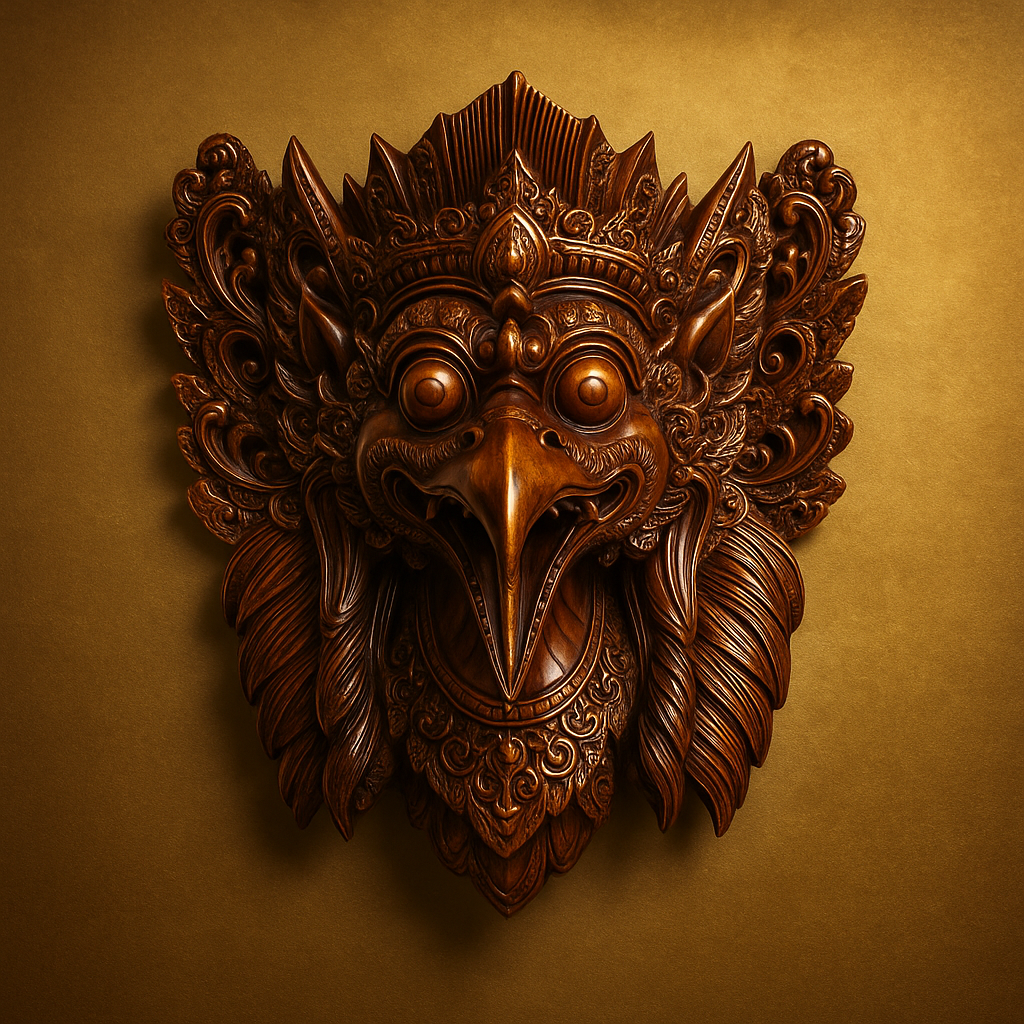
In recent decades, Garuda sculptures have transcended their traditional roles to become highly sought-after items in the global home decor market. Their intricate designs, rich symbolism, and exotic appeal make them perfect statement pieces for interior design enthusiasts worldwide.
Balinese artisans and businesses have capitalized on this trend by producing a wide range of Garuda handicrafts tailored for wholesale distribution. These range from small, affordable figurines to large, elaborate sculptures suitable for luxury home decor. Wholesale buyers, including retailers and interior designers, appreciate the blend of cultural authenticity and artistic quality that these handicrafts offer.
Moreover, the rise of e-commerce platforms has expanded the reach of Balinese Garuda sculptures, making them accessible to customers far beyond the island. This global demand has encouraged artisans to innovate while preserving traditional craftsmanship, ensuring the handicrafts remain relevant and economically viable.
Why Choose Garuda Sculptures for Home Decor?
- Symbolic Protection: Many homeowners appreciate the spiritual symbolism of Garuda as a guardian figure.
- Artistic Appeal: The craftsmanship and detailed carving make these sculptures visually captivating.
- Versatility: Available in various sizes and styles, they fit well in living rooms, gardens, offices, and meditation spaces.
Decorating Tips
- Focal Point: Place a large Garuda sculpture in the living room or entrance hall to create a powerful focal point.
- Complementary Decor: Pair with natural materials like bamboo, rattan, and stone to enhance the Balinese aesthetic.
- Lighting: Use soft, warm lighting to highlight the intricate carvings and create a serene ambiance.
🌍 Tourism and Its Impact: Spreading the Legacy of Garuda Handicrafts Worldwide
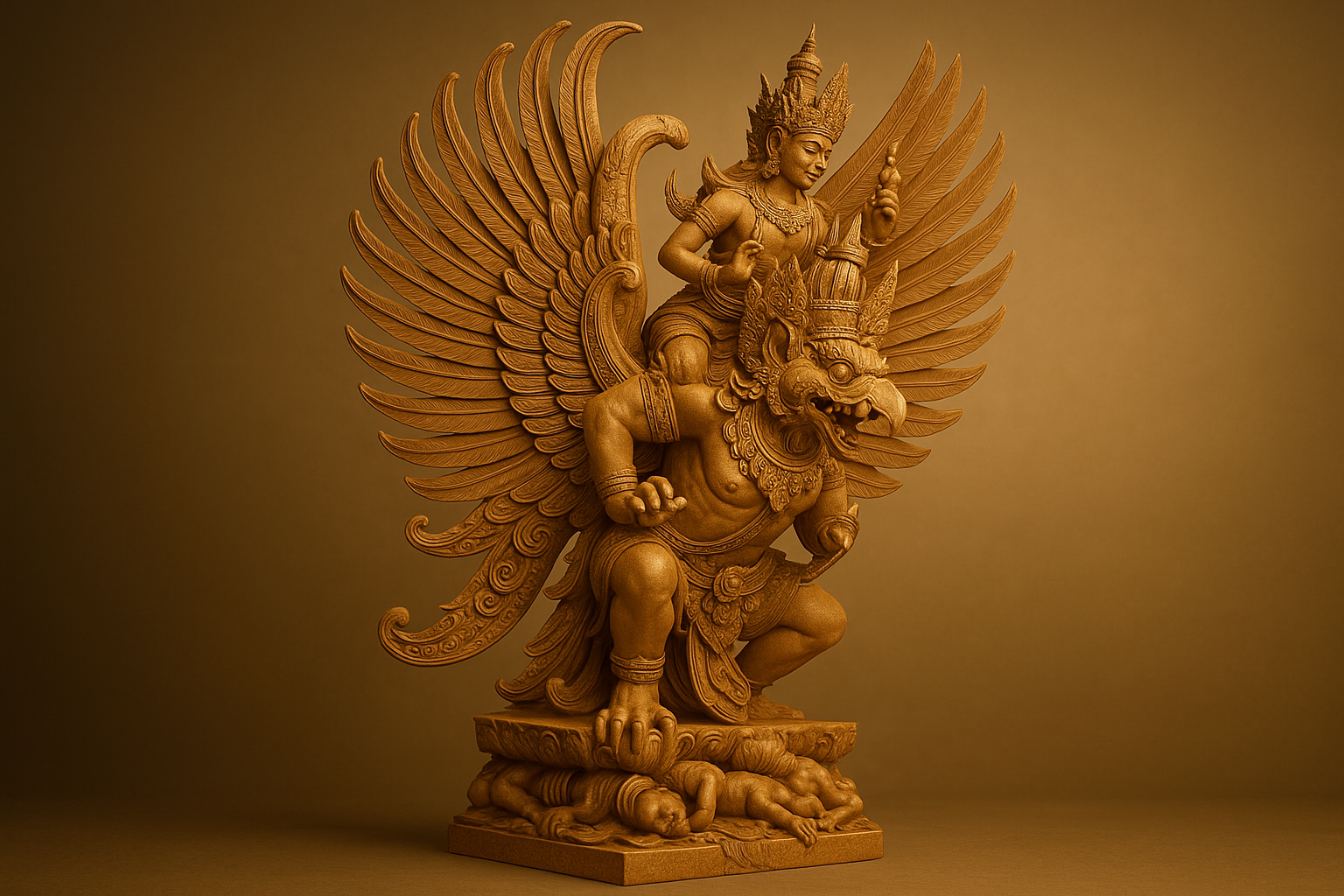
Tourism has played a pivotal role in popularizing Garuda sculpture handicrafts. Bali’s status as a top travel destination attracts millions of visitors annually, many of whom seek authentic souvenirs that capture the island’s spirit. Garuda sculptures, with their striking appearance and cultural depth, are among the most popular choices.
Local markets, artisan villages, and galleries offer a vibrant wholesale scene where tourists and business buyers alike can purchase these handicrafts. This influx of interest has provided artisans with steady income and motivated the preservation of traditional techniques.
However, tourism also brings challenges, such as the risk of mass-produced imitations that lack authenticity. To combat this, many Balinese communities emphasize quality, certification, and storytelling to educate buyers about the cultural significance and craftsmanship behind genuine Garuda sculptures.
🛒 Garuda Sculpture Handicrafts in Wholesale: Opportunities and Trends

For business owners and retailers, Garuda sculpture handicrafts represent a lucrative niche in the wholesale market. Bali’s reputation as a hub for quality handicrafts ensures a steady supply of authentic, handcrafted pieces.
Why Invest in Garuda Sculptures Wholesale?
- High Demand: Growing global interest in ethnic and spiritual home decor drives demand.
- Unique Product Offering: Garuda sculptures stand out in the crowded handicraft market due to their cultural significance and artistic value.
- Customization: Many Balinese artisans offer customization options, allowing wholesalers to cater to diverse customer preferences.
Trends in the Wholesale Market
| Trend | Description |
|---|---|
| Eco-Friendly Materials | Increasing use of sustainable wood and natural dyes appeals to environmentally conscious buyers. |
| Fusion Designs | Combining traditional Garuda motifs with modern design elements to attract younger audiences. |
| Online Wholesale Platforms | Digital marketplaces are expanding reach, making it easier to source and distribute Balinese handicrafts globally. |
🌟 Preserving the Legacy: Challenges and Future of Garuda Sculpture Handicraft
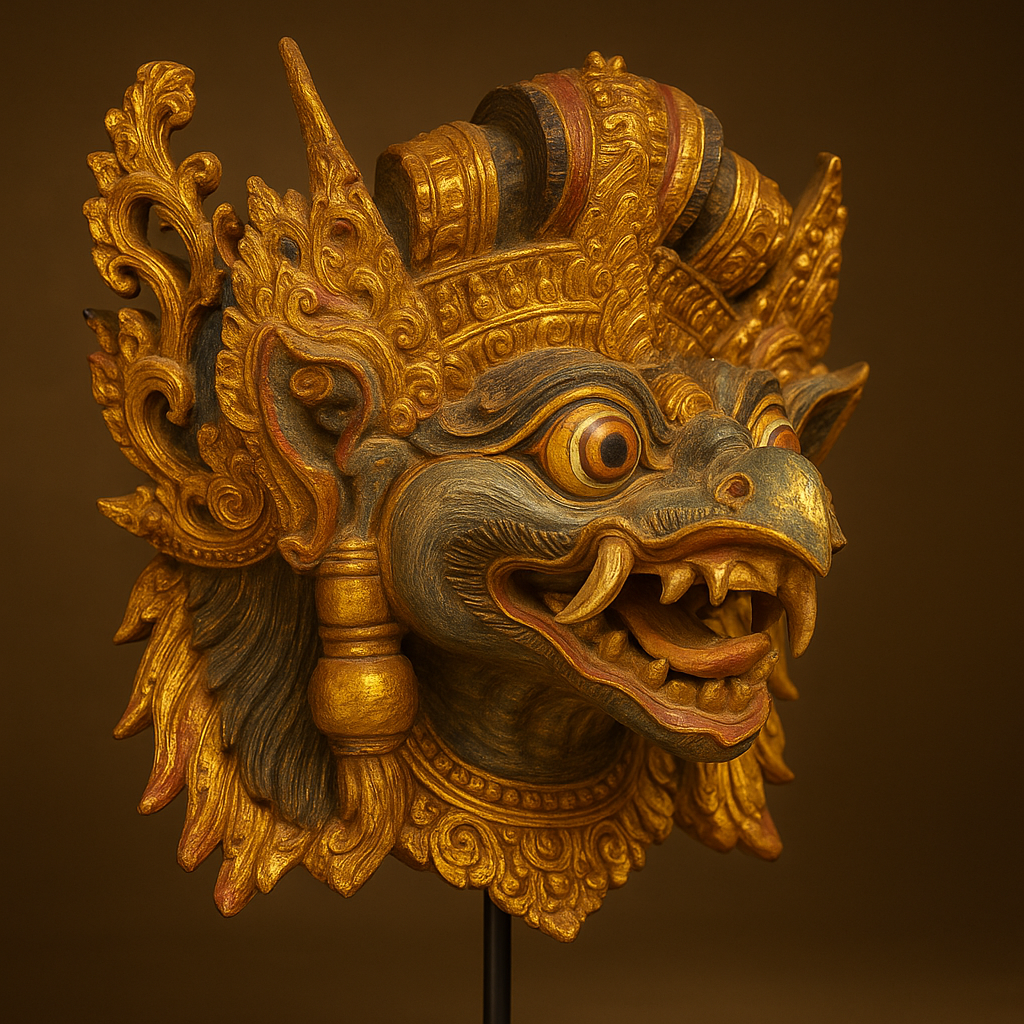
While the tradition of Garuda sculpture handicraft is thriving, it faces challenges that could impact its future.
The future of Garuda sculpture handicrafts depends heavily on sustainable practices and the empowerment of local artisans. Many craftsmen face challenges such as limited access to quality materials, competition from cheaper imports, and the need to adapt to changing market demands.
In response, several initiatives have emerged to support artisans through training, fair trade practices, and sustainable sourcing of materials. These efforts aim to ensure that the tradition of Garuda sculpture handicraft continues to thrive, providing economic stability for communities while preserving Bali’s rich cultural heritage.
For wholesale buyers and home decor enthusiasts, choosing authentic, sustainably made Garuda sculptures means supporting this vibrant tradition and the talented artisans behind it.
Challenges
- Mass Production: The rise of machine-made replicas threatens the authenticity and value of handmade sculptures.
- Resource Scarcity: Sustainable sourcing of quality wood is becoming difficult due to deforestation.
- Cultural Dilution: Commercialization risks diluting the spiritual and cultural significance of the art.
Efforts for Preservation
- Artisan Cooperatives: Groups of artisans collaborate to maintain quality standards and fair trade practices.
- Cultural Education: Workshops and exhibitions educate both locals and tourists about the heritage of Garuda sculptures.
- Sustainable Practices: Emphasis on eco-friendly materials and responsible harvesting to protect natural
✨ Conclusion: The Enduring Charm of Garuda Sculpture Handicrafts in Bali
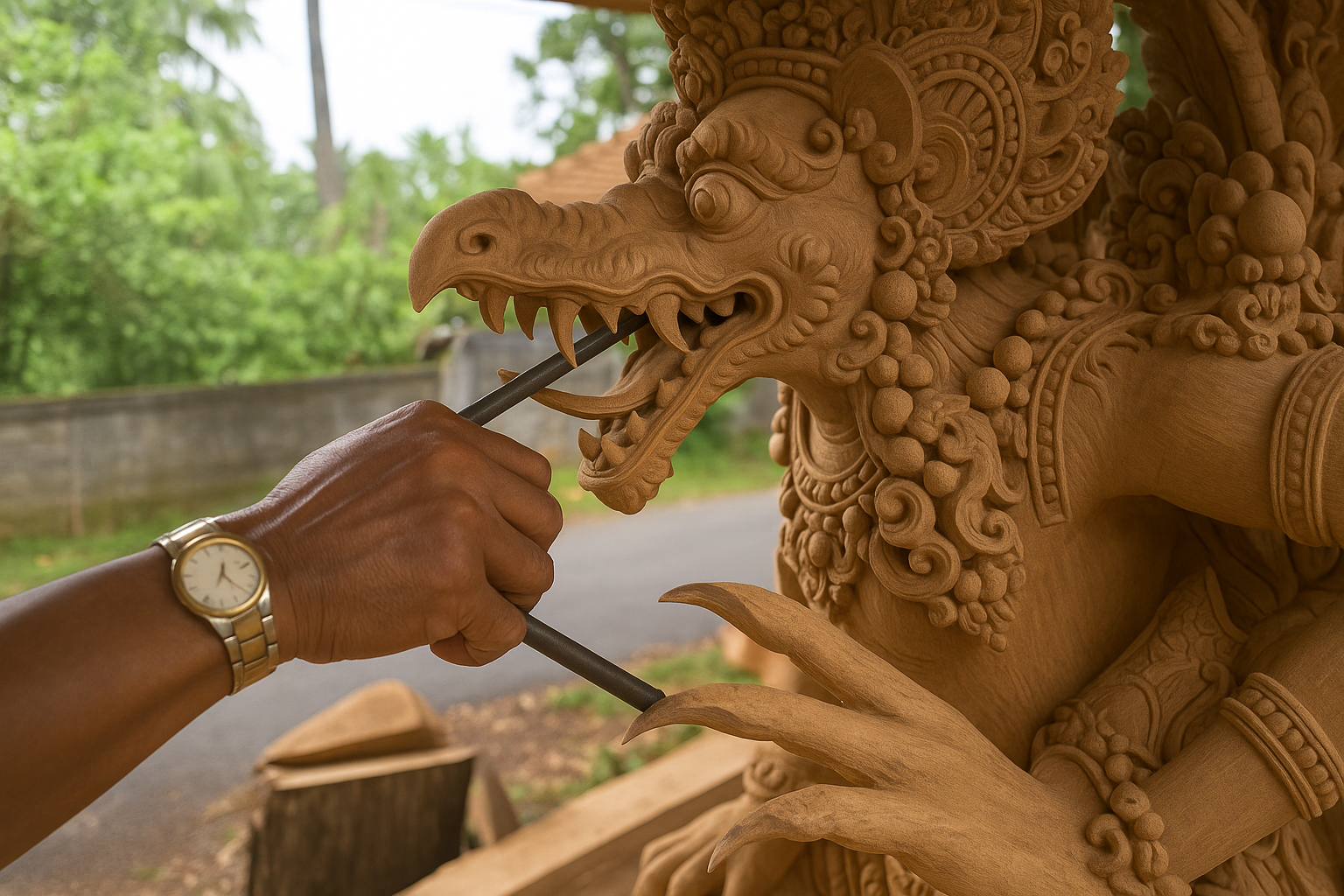
The history of Garuda sculpture handicrafts in Bali is a testament to the island’s deep spiritual roots, artistic excellence, and cultural resilience. From ancient temple carvings to modern home decor masterpieces, these sculptures embody a unique blend of mythology, craftsmanship, and contemporary appeal.
Whether you are a collector, a retailer seeking wholesale handicrafts, or someone looking to enrich your home decor with meaningful art, Garuda sculptures offer a timeless connection to Bali’s soul. By appreciating their history and supporting authentic artisans, we help keep this magnificent tradition alive for generations to come.